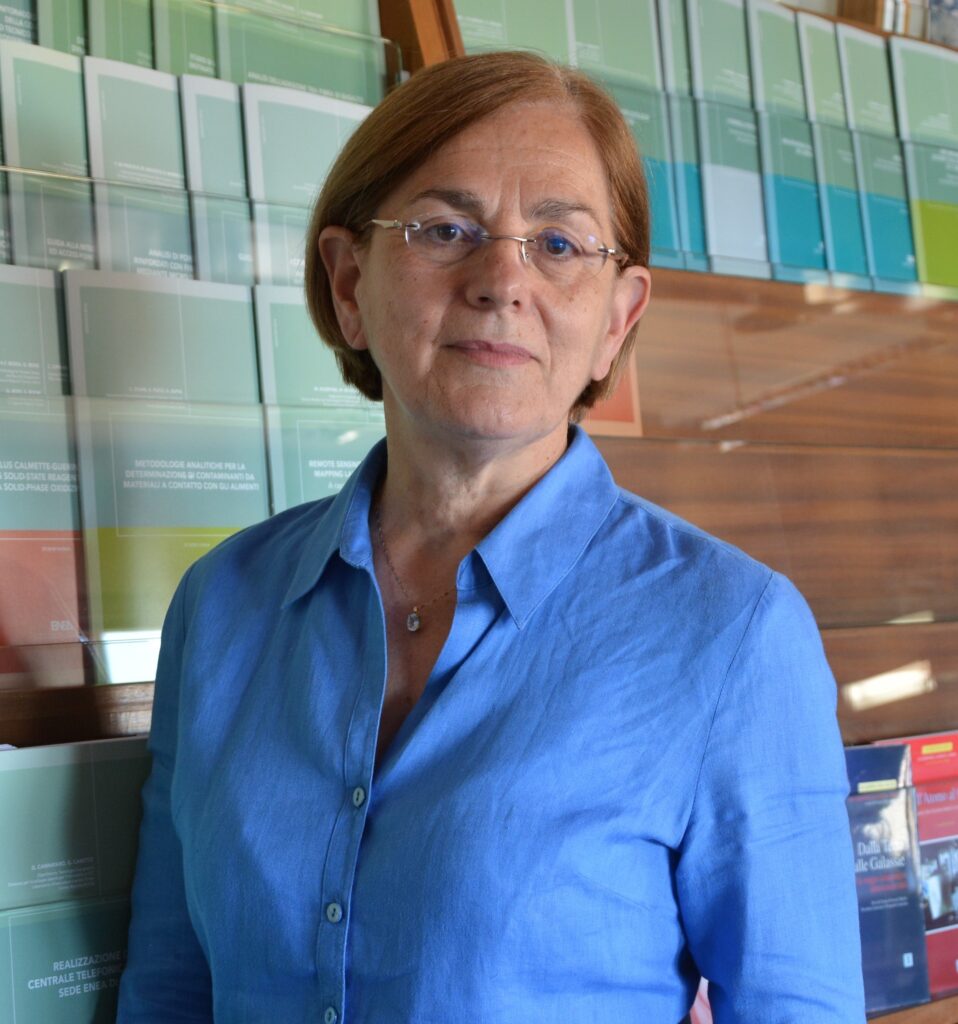‘A complex endeavour such as the development of fusion energy can certainly benefit from combining the efforts worldwide’
Paola Batistoni – Head of the Fusion Development Unit of ENEA

Paola Batistoni started working in fusion research more than thirty-five years ago at the ENEA Centre in Frascati. Since the beginning, Batistoni has been involved in fusion technology, in particular in fusion neutronics, both on tokamak diagnostics (on FTU, JET, TFTR, ITER) and on neutron generators. At the beginning of her career, fusion neutronics was still in its early phase but a huge progress has been achieved since then with the development of accurate nuclear data and neutronics codes for fusion and their experimental validation. In Europe a good contribution to such progress in this field has been obtained thanks to the experimental activity carried out in ENEA, in collaboration with many European partners at the FNG 14-MeV neutron source, which Paola Batistoni has directed for almost fifteen years. In the last seven years the researcher has continued in the same line at JET as a Project Leader of the Eurofusion Work Package on Deuterium-Tritium Technology at JET. In the frame of this project, now in its final phase, a number of innovative measurements have been performed for the validation of the most advanced codes used to design ITER and DEMO in real tokamak environment, including JET DT operations producing and unprecedented 14 MeV neutron yield. Currently, as a senior fusion scientist in ENEA, Batistoni coordinates the fusion activities and the participation in the European fusion programme. However, Batistoni explains that one of the most interesting experiences during her long career, though carried out for only a few years in parallel to my main research activity: the one as Industry Liaison Officer for ITER in Italy, which allowed her to closely frequent and support the industries in her Country and to understand how important is research work for the economic and social development.
-ENEA is one of the international partners in the DONES-PreP project, the preparatory phase for the construction of IFMIF-DONES in Spain. What is the role of your institution in this project?
-ENEA is one of the most important contributors to the European fusion programme, both in physics and technology. We are committed to the success of the roadmap towards fusion energy in which the construction of an intense neutron source represents a key element for the qualification of the fusion reactor materials. ENEA together with Istituto Nazionale di Fisica Nucleare (INFN) have contributed to IFMIF in the frame of the Broader Approach and they can play an important role in IFMIF-DONES thanks to their unique competences in the Lithium target technologies and in particle accelerators, respectively. Thanks to the well established collaborations between industry and research laboratories in these fields, the Italian industry has the competences to contribute to the construction of DONES in both the accelerator and the Lithium target areas.
As partners in the DONES-Prep Project, ENEA has contributed to the definition of the DONES legal, governance and financial framework for the project, as well as to the preparatory activities for the required licesing and permitting. We are now coordinating the necessary actions for the Italian participation in the project with adequate financial support.
-Since 1984, you have carried out your professional carrier in the field of nuclear fusion and have witnessed important international steps in the race towards fusion energy. Which are the major milestones in your opinion? Which have been the key experiments that have led us to the current situation?
-Indeed, I have witnessed a huge progress in nuclear fusion since I started to work in this field. I could mention a number of experiments and results but in my opinion the most important step by large is the construction of ITER: a big leap into the fusion reactor reality which not only made us be aware and study aspects not investigated before, it also boosted research, knowledge and innovation in all relevant areas from physics (think of the development of operation scenarios with metal walls, the mitigation of instabilities at the plasma edge, the suppression of the effects of disruptions, etc.) and technology (think of superconducting magnets, divertor, additional heating systems, materials and fabrication technologies, tritium containment, safety and waste management, licencing). Building on the ITER physics and technology basis and experience, in the next years we need to implement the R&D programme required to extrapolate from ITER to DEMO. DONES is a key element in this programme for verification and validation of blanket materials for DEMO.
-You have been involved in large international projects, like JET. What are the main challenges and advantages of working in an international network of researchers?
-From a scientific point of view, I can only see advantages in working in international networks with a variety of different background and cultures, and pooling resources, competences, laboratories and instruments which could not be possibly found all together in one place. Personally, as leader of international projects I have never found difficulties, on the contrary I have always enjoyed working in multicultural teams. A complex endeavour such as the development of fusion energy can certainly benefit from combining the efforts worldwide. The challenges may be sometimes due to the fact that the different Countries may have different strategic priorities and change in time theirs programmes and allocated resources making unstable any plans for long term collaborations. Within Europe luckily we have a well coordinated fusion programme funded by Euratom for periods of five plus two years, which provides us with the necessary continuity to develop a complex and challenging programme.
-What is the role of women in fusion research? Is it difficult for women to gain access to this field?
-I am afraid women have still a minor role in fusion research, although their presence has grown since I started working in this field. In 2018 I organised the 30th Symposium of Fusion Technology in Italy, the largest international fusion technology conference. Looking at the Conference statistics, I found that only 12% of participants and 9% of invited/oral speakers were women. In plasma physics the female presence is larger than in technology but still minor. I see two problems here: on one hand, women are less attracted by fusion, probably we should improve the communication of its environmental and social objectives to students. On the other hand, in many Countries fusion research is carried out in a nuclear environment traditionally, and still, characterised by strong male pre-eminence. This is why in fusion the gender equality progresses more slowly than in other fields. Nevertheless, I see a growing a number of very good young female colleagues who are gaining more and more positions of leadership only thanks to their “bravura”. There is nothing easy for women, not yet!
-How would you describe Italy’s Government’s commitment to science, research, and innovation? In the current economic crisis caused by the coronavirus pandemic, is it harder to defend the need to invest and support large scientific infrastructures like IFMIF-DONES?
-I believe that Covid-19 crisis has increased the public confidence in scientific research in general as a mean to fight pandemics, environmental issues and climate change. In these days the Italian Government is defining the National Plan for Recovery and Resilience which envisages, as part of the Next Generation EU programme, investments and a consistent reform package for the next years aiming at repairing the economic and social damage caused by the pandemic crisis, and leading the country along a path of ecological and environmental transition, in line with the EU objective of a climate-neutrality by 2050. Although the emphasis is on the development of renewable energies, meeting the very challenging objective of the global decarbonisation of the energy sector will require a portfolio of energy solutions. Thanks to its characteristics, fusion energy could significantly contribute to making the goal of decarbonisation fully sustainable over time. For this reason, governments should continue to support fusion research to for a sustainable energy mix for a cleaner planet and a better quality of life.
Italy is committed to support fusion research. Recently, it has undertaken, in agreement with the European partners, to build an important fusion research infrastructure, called the Divertor Tokamak Test (DTT), to study alternative divertor configurations for DEMO, for a total investment of approximately € 600 million, and with a European contribution of approximately € 60 million.
-What are the objectives and deadlines for the project to build the DTT tokamak?
-A reliable solution to the problem of heat exhaust and helium removal is one of the main challenges in realising a fusion reactor based on magnetic confinement. As the conventional divertor, pursued in ITER, could not be extrapolated to DEMO, the European fusion roadmap includes an aggressive programme on alternative solutions for the heat exhaust. In the frame of the European programme, DTT will investigate alternative divertor configurations for DEMO. The construction of DTT has started at the ENEA Center in Frascati by a consortium set up with the participation of ENEA (70.5%), ENI (25%), and of CREATE, RFX, INFN, Politecnico di Torino, Universities of Milano Bicocca, of Tuscia and of Rome Tor Vergata (CNR is also joining). The completion of construction and start of operation is scheduled for 2026.
The DTT national endeavour represents a great opportunity of economic, cultural and social growth for the Country. It will make the most of the skills developed in the field by Italian industry, research laboratories and universities while boosting innovation that can be used in other strategic industrial sectors not related to nuclear fusion, such as, for example, the aerospace industry, robotics, superconductivity. It will have a great impact also on the local area in terms of economic return for the supplies and services it will need, of employment and cultural development. Thanks to the wide participation of research labs and universities, it represents unique opportunity for the whole Country to train of a new generation of scientists and engineers around a highly complex and highly innovative project.

